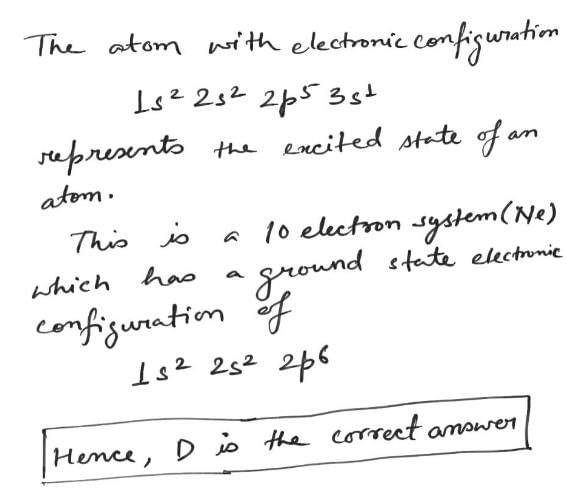Test: Periodic Properties- 3 - Chemistry MCQ
30 Questions MCQ Test - Test: Periodic Properties- 3
Which is not similar characteristic(s) about the electronic configuration of Be, Mg, Ca:
The most electropositive element possesses the electronic configuration:
Which one of the following elements shows both positive and negative oxidation states:
Which of the following arrangements shows the correct order of decreasing paramagnetism:
The elements with the lowest atomic number that has a ground state electronic configuration of (n – 1) d6ns2 is located in the:
The atomic numbers of the metallic and non-metallic elements which are liquid at room temperature respectively are:
In the periodic table, metallic character of the elements shows one of the following trend:
Which of the following represents the correct order of increasing first ionization enthalpy for Ca,Ba,S,Se andAr?
Sodium generally does not shown oxidation state of +2, because of its:
Which of the following pairs of molecules have the almost identical bond dissociation energy:
According to modern periodic law the properties of elements repeat at regular intervals when the elements are arranged in order of:
Consider the following four elements, which are represented according to long form of periodic table.
Here W, Y and Z are left, up and right elements with respect to the element ‘X’ and ‘X’ belongs to 16th group and 3rd period. Then according to given informat ion the incorrect statement regarding given elements is:
In the fourth period of the periodic table, how many elements have one or more 4d electrons:
Assuming that elements are formed to complete the seventh period, what would be the atomic number of the alkaline earth metal of the eighth period:
Which of the following represents an excited state of an atom:
Choose the correct statement regarding transition elements:
Zn and Cd metals do not show variable valency because:
A compound contains three elements A, B and C, if the oxidation number of A = +2, B = +5 and C = –2, the possible formula of the compound is:
The period number and group number of “Tantalum” (Z = 73) are respectively:
Which of the following pair of elements belongs to the same period?
Consider the following electronic configuration of an element (P):
[Xe] 4f145d16s2
The correct statement about element ‘P’ is:
Which of the following metal is highest electropositive (metallic) in nature:
Which of the following species must have maximum number of electrons in ‘dxy’ orbital:
Which property decreases from left to right across the periodic table and increases from top to bottom:
(I) Atomic radius
(II) Electronegativity
(III) Ionization energy
(IV) Metallic character
Consider the following information about element P and Q:
Then formula of the compound formed by P and Q element is:
Which electronic configuration must represent an atom in an excited state:
Among NaF , NaCl , NaBr and Nal , the NaF has highest melting point because















